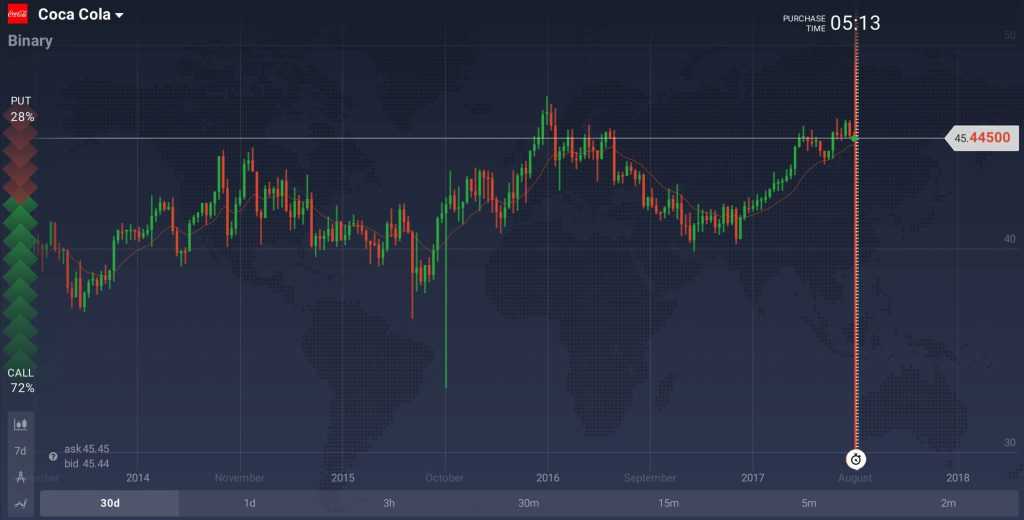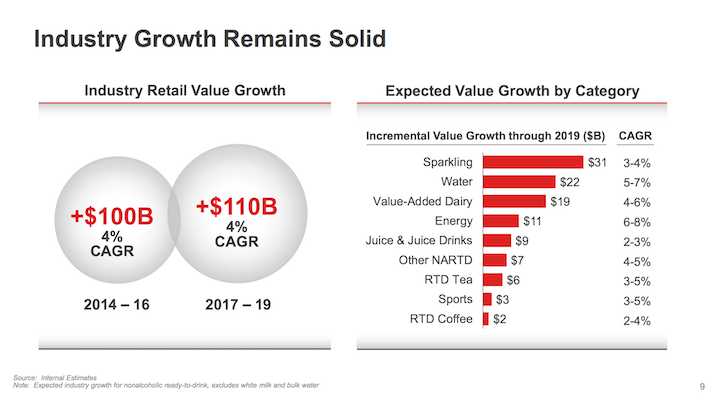One of the Warren Buffet’s favorites, the Coca-Cola Company has been demonstrating humble yet steady growth for the last eight years. The XXI century is not always kind to the sugary drinks giant, yet its 130-year-long history and expertise leave the company a chance of finding its place in investment portfolios of many renowned investors. These are the five factors that are likely to determine the KO stock price in the upcoming years and months.

Strong Brand
Strong brand is usually the first thing that comes to the minds of analysts and the general public as soon as the topic of conversation is changed to the Coca-Cola Company. And for a good reason: Coca-Cola — which is definitely not the only name in the company’s portfolio — is the world’s fifth-largest brand. Consumers, if treated correctly, fall in love with brands just as they do with people and stay loyal to one particular company for the rest of their lives. With over 500 brands in its portfolio, some of them globally recognized, the company can offer a wide range of sparkling and still beverages.
Coke, Diet Coke, Sprite and Fanta all belong to the list of the five most expensive non-alcoholic sparkling beverage brands. In 2016 the company operated 21 one-billion-dollar brands. 15 more brands generate annual sales of between $500 million and $1 billion. Since 2006, 11 billion-dollar brands have been added to the company’s portfolio, which is definitely a good sign.
Price Action
The Coca-Cola Company has demonstrated positive stock price dynamics in the past. KO shares grew 10.2% year-to-date. Although it still underperformed the industry, the company has received advantageous prospects from the world’s leading experts, including Warren Buffet himself. Revenues, and therefore the stock price, can be improved by the growing margin or better product mix, Coca-Cola’s top management believes.
Emerging Markets
While carbonated drinks are getting less lucrative to the Western consumers (even getting the unfavorable status in certain states), customers in the emerging countries perceive Coca-Cola itself and other products of the company in a more positive way. China, India, Russia and countries of Latin America have all fell victims to their love for sugary beverages. More than 50% of company’s revenues come from outside the United States.
With $18 billion already invested in productive infrastructure in India, the Coca-Cola Company has plans to invest $5 billion more in this country by the end of 2020. China, too, is praised for long-term opportunities, which Coca-Cola is not intended to miss. Since 1979, the company has invested over $13 million in the most populous nation on the planet.
Market Volatility
Though lucrative and potentially highly profitable, emerging markets bear ingrained risks that certain experts believe can have a serious negative effect on the Coca-Cola’s financial performance. Political and economic instability in certain regions of the world has already made the company reevaluate its strategy and reallocate funds.
An ongoing crisis in the Middle East has made the region considerably less prosperous. Economic slowdown in certain parts of the world, including China and Russia doesn’t add to the financial wellbeing of the company, too. Brazil, China and Argentina — largest economies in Latin America — all suffer from economic downturn and cautious consumer spending. Consumer spending in these parts of the world can be expected to go down or at least not demonstrate reasonable growth.

Unhealthy Products
Sugary drinks have drawn the attention of politicians and health organizations back in the United States and several European countries, as well. Emerging markets are less worried with health issues carbonated drinks pose. However, it is only a matter of time consumers in other corners of the world become more sensitive to their health. Success of the company in the U.S. and Europe will depend therefore on its ability to adapt to new tastes and trends and offer healthier products to the wider audience.
The Coca-Cola Company has played the role of a safe-haven investment for long-term investors for several decades already and is very likely to retain this status. The price action can be expected to demonstrate moderate upward movement in the upcoming months. Yet short-term dips cannot be ruled out completely.
